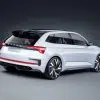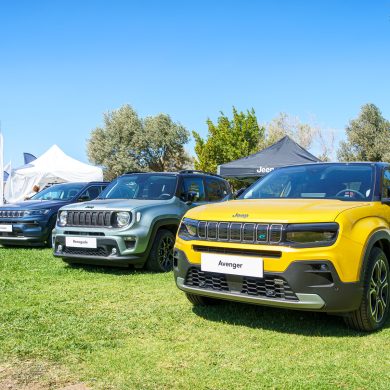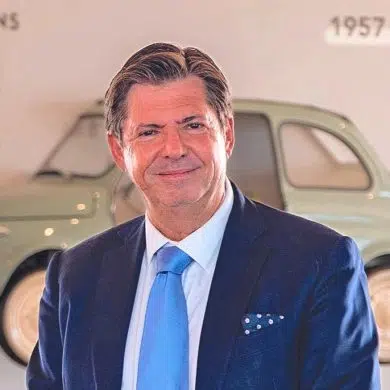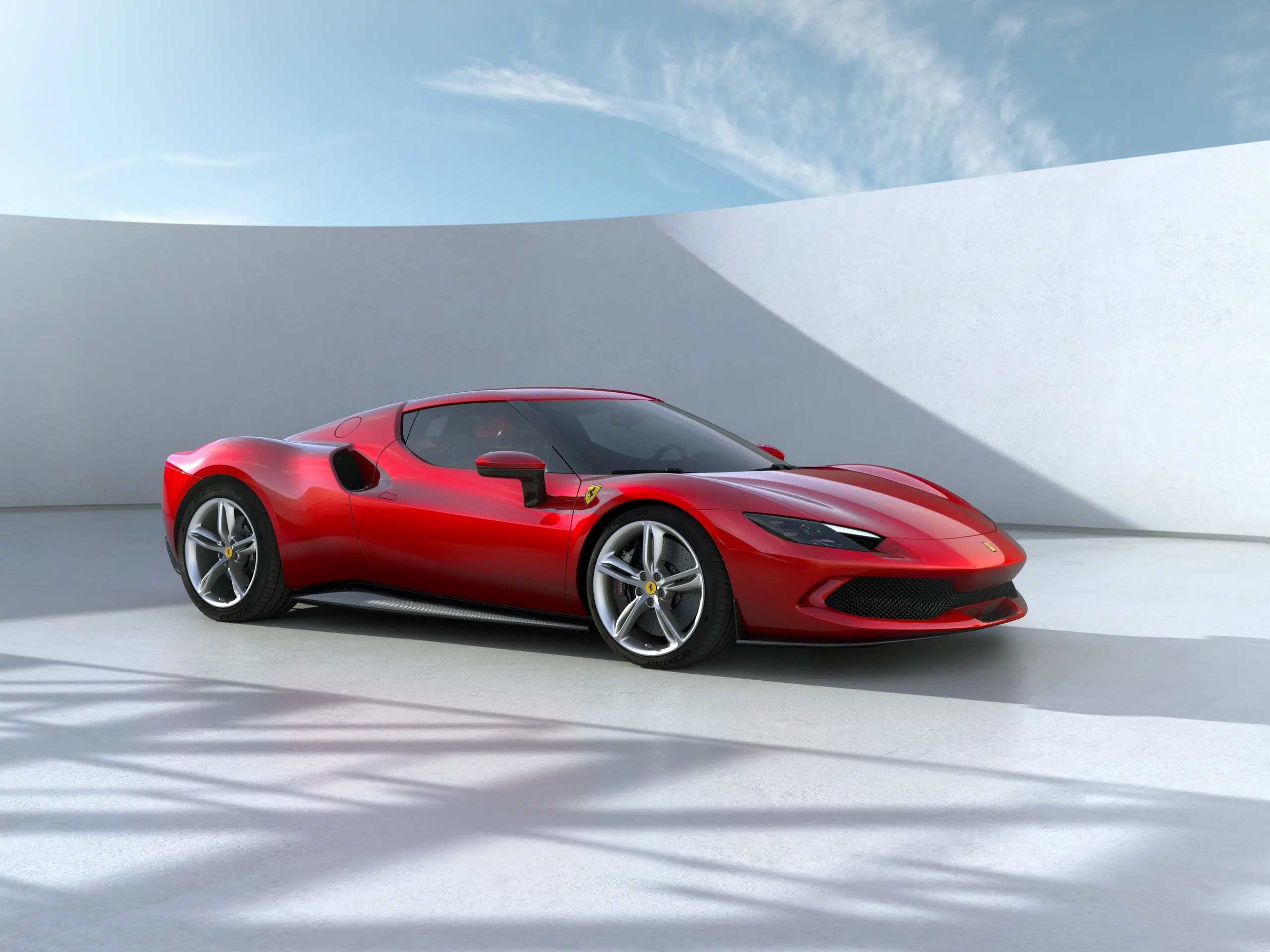
O tempora, o mores. Times change, mores change, and the advent of the new 296GTB, which shows us that now each manufacturer, regardless of how many car units it produces each year, is now entering a new, electrified era. The 296GTB, is the first V6 Ferrari (to catch up with you who will say it was Dino, it was not "official" as the badges said Dino and not Ferrari), with the Italians to continue in the same trajectory of impressiveness that they brought with them SF90. The 296GTB, aims to be a car in the paths of the 911 Turbo S or of McLaren, useful and practical for everyday driving, not excluding the explosive performance. So let's take a closer look at what the new 296GTB is.
The heart of the 296GTB
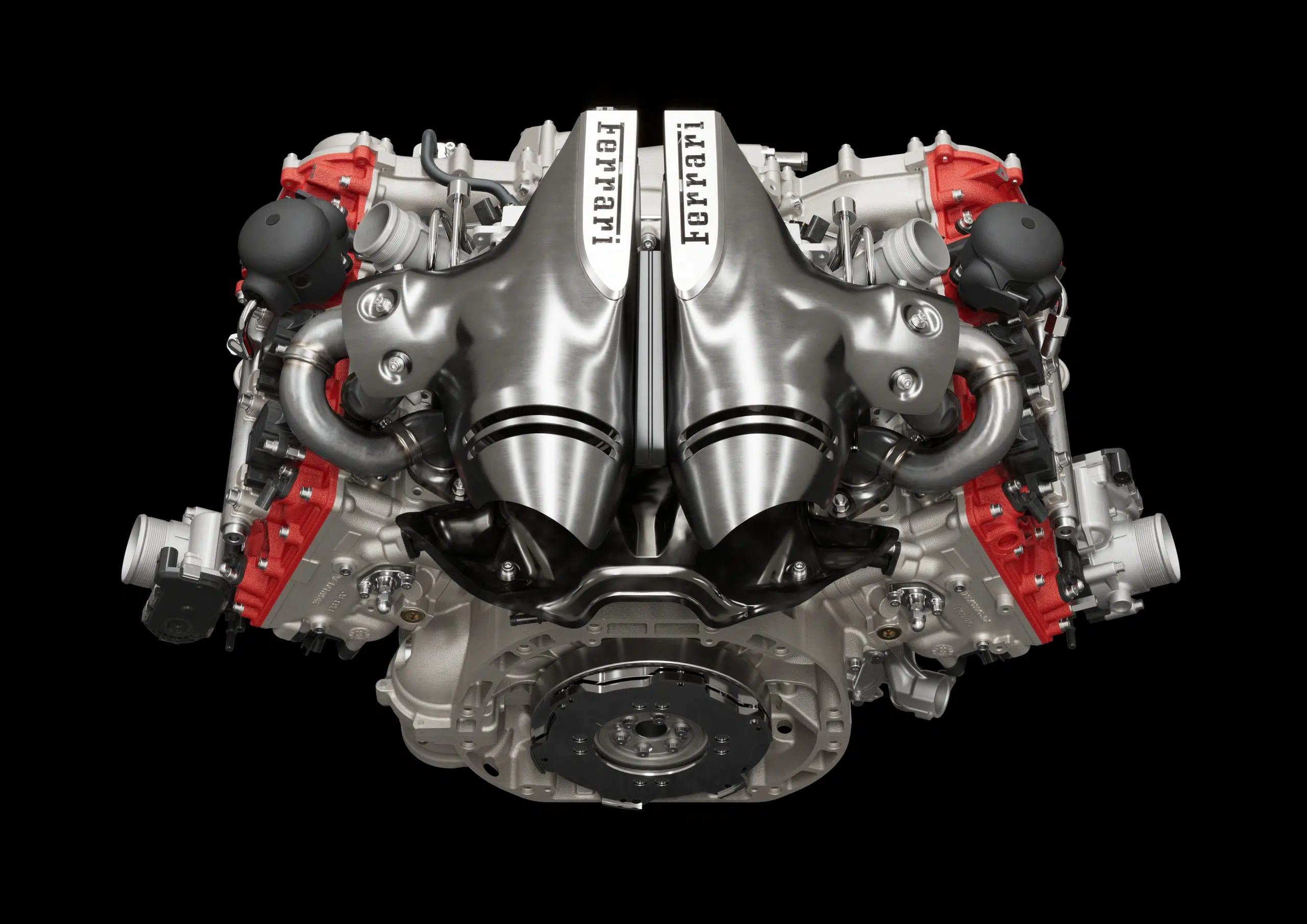
Η heart of 296GTB, is a new one, designed from scratch, V6 twin turbo engine, with a capacity of 2.9 litres and 663 hp. For the first time, Ferrari is designing an engine with 120 degree angle and the turbo in V, also known as "Hot V", which reduces the volume of the engine by allowing it to be placed lower, resulting in a lower centre of gravity. In addition, the placement of the turbo inside the V, gives the engine better response on the throttle, minimising turbo lag. The 296GTB's 3-litre V6, thanks to rounding, delivers 221 hp/litre capacity, setting a new horsepower/litre record in a production car. Compared to previous Ferrari turbos, the 296GTB uses a redesigned turbo, which carries lighter alloys, which allows them to improve performance by 24%. It's worth saying, from the videos released by Ferrari, the 296GTB engine produces a very good sound, considering that we now have OPF filters and turbo engine.
Η electrical side at the heart of the 296GTB, is a new electric motor, 167 horsepower output, which is powered by the high-voltage battery, having a capacity of 7.5 kWh. Combined, the 296GTB has an output of 830 horsepower. Yes, you read that right, a mass-produced V6 supercar now produces 830 horsepower. We may not yet know consumption, not that anyone really cares, it's just a matter of debate, but knowing that the 918 Spyder about a year ago 10 years, he managed to achieve a consumption in combined cycle at 3.1 litres/100 km, we believe that the 296GTB may well be in the low 2 litres/100 km range.
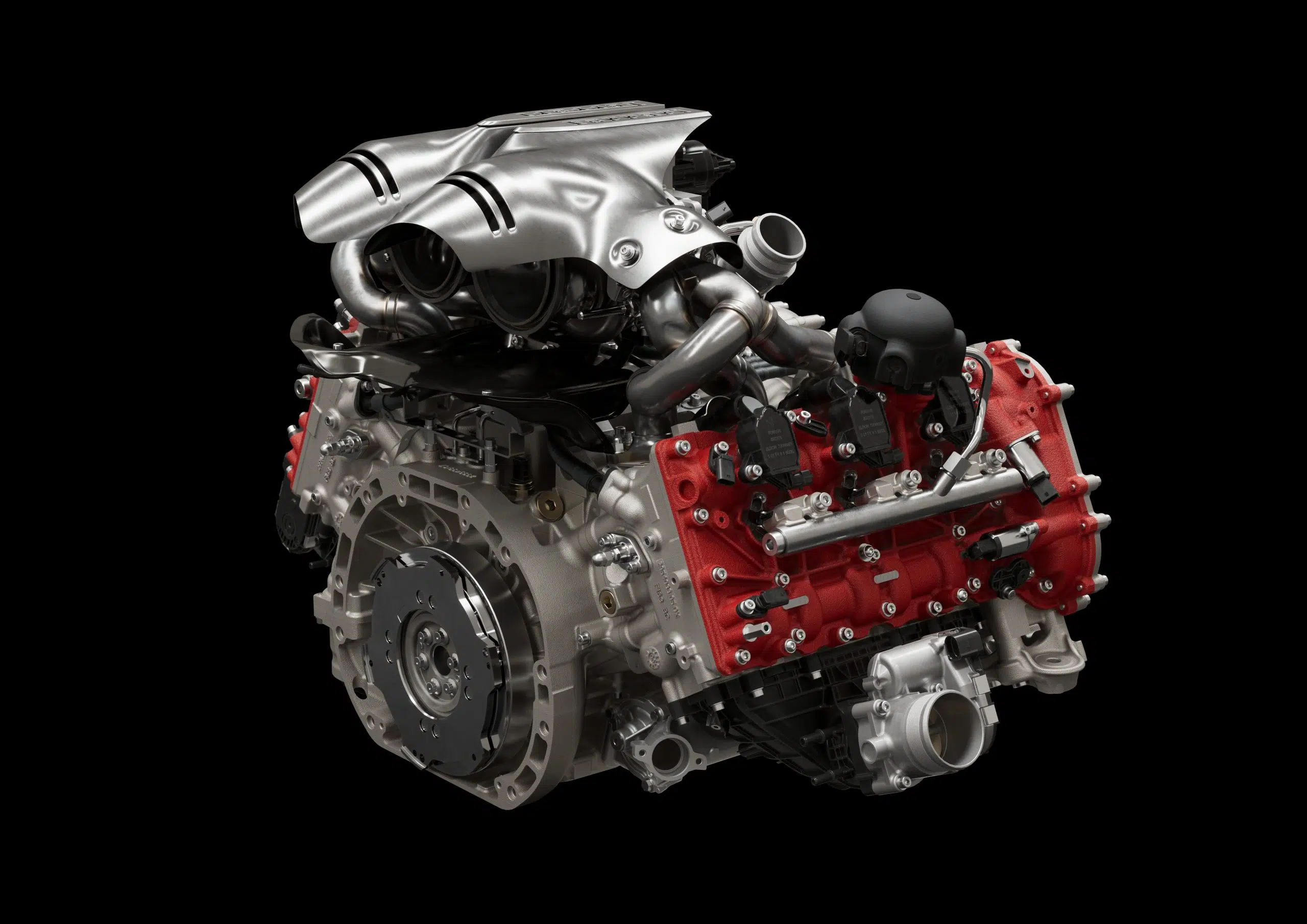
The 296GTB, features 4 driver profiles at eManettino (the new name of the Manettino, in hybrid models) of :
- eDrive : In this profile, the 296GTB will run on pure electric power until its battery is fully depleted, at a maximum speed of 135 km/h or for 25 km distance, at a charge rate of 100%.
- Hybrid : In this profile, the 296GTB will switch between electric motor and internal combustion engine, depending on performance requirements and other factors
- Performance : In this profile, the 296GTB will keep the internal combustion engine always running, while trying to keep the battery charge rate as high as possible to maximise the range it can offer and the 830 hp it can deliver, but focusing on a balance between performance and duration it can offer.
- Qualify : In this profile, the 296GTB will focus on delivering all 830 horsepower continuously until its battery is completely depleted and will charge at a lower rate as it focuses on maximum performance for a shorter period of time.
Η Transmission of the movement, is done with the new automatic 8-speed dual-clutch transmission, which Ferrari already uses in the Roma and SF90. Ferrari announces for the moment, the following measurements:
- 0-100 : 2.9 seconds
- 0-200 : 7.3 seconds
- 200-0 : 107 metres
- Top speed : >330 km/h
- Fiorano time : 1:21 (1″ faster than 812 Competizione & 1″ slower than SF90)
Design & Aerodynamics
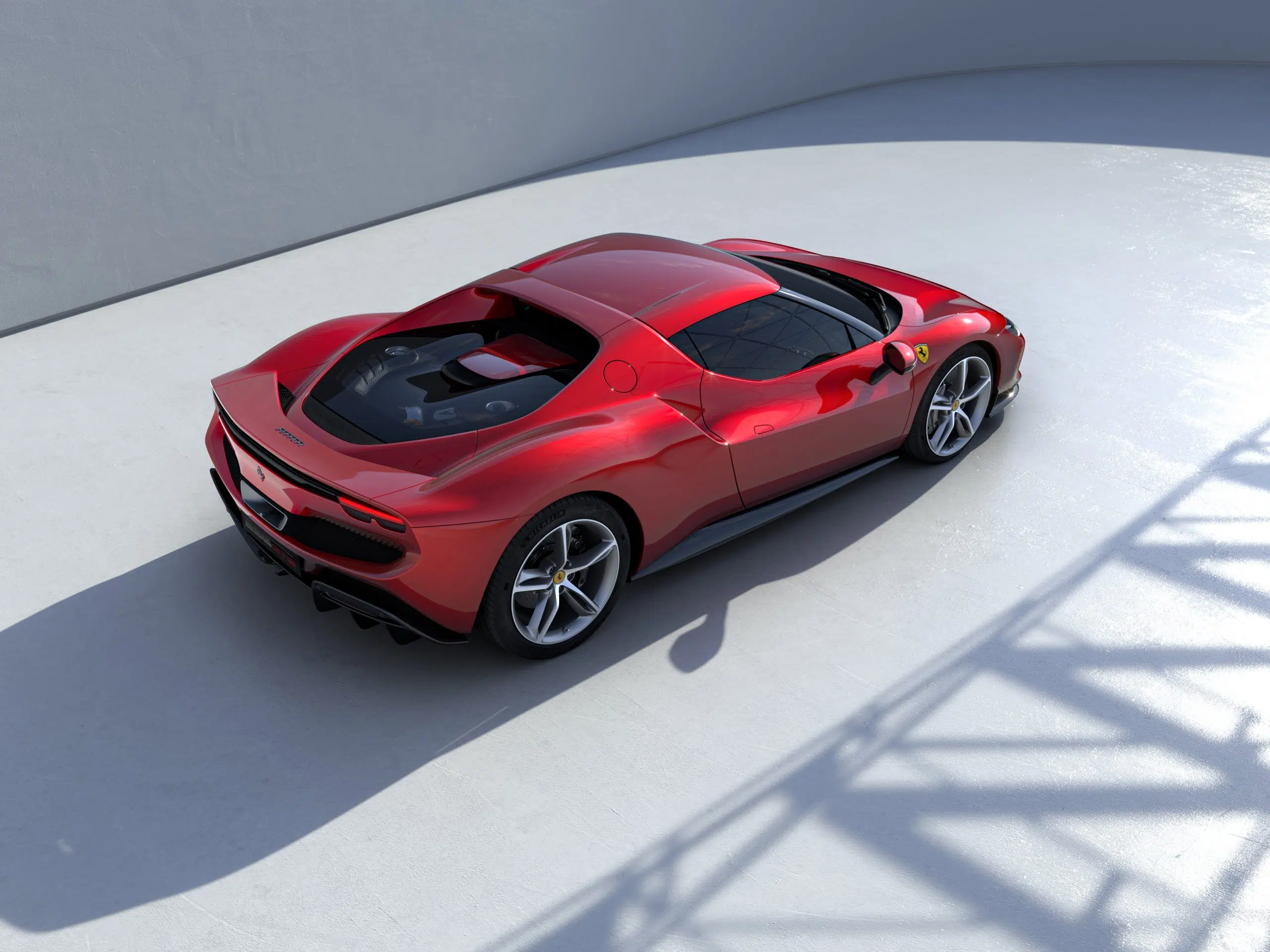
The Ferrari name, is inextricably linked to impressive design, which evokes awe to anyone who looks at it. With the SF90 leading the way in the centerline V8 Ferrari, Roma in the GT and 296GTB continuing the new design tradition in the Ferrari centrics, we see a change in the design identity of the Maranello creations.
The design blends perfectly with elegance and practicality. In the 296GTB there is no not a single piece that does not perform some usable function. Η main source of inspiration for its design, comes, as Ferrari says, from the 250LM. The windscreen seems to continue to the side, its lights are part of its aerodynamic design, the architecture of each part is made to have the least possible aerodynamic resistance but also to supply the engine, the cooling system of each mechanical part and the brakes with enough air to keep all parts in the right position. ideal temperature range, at any time.
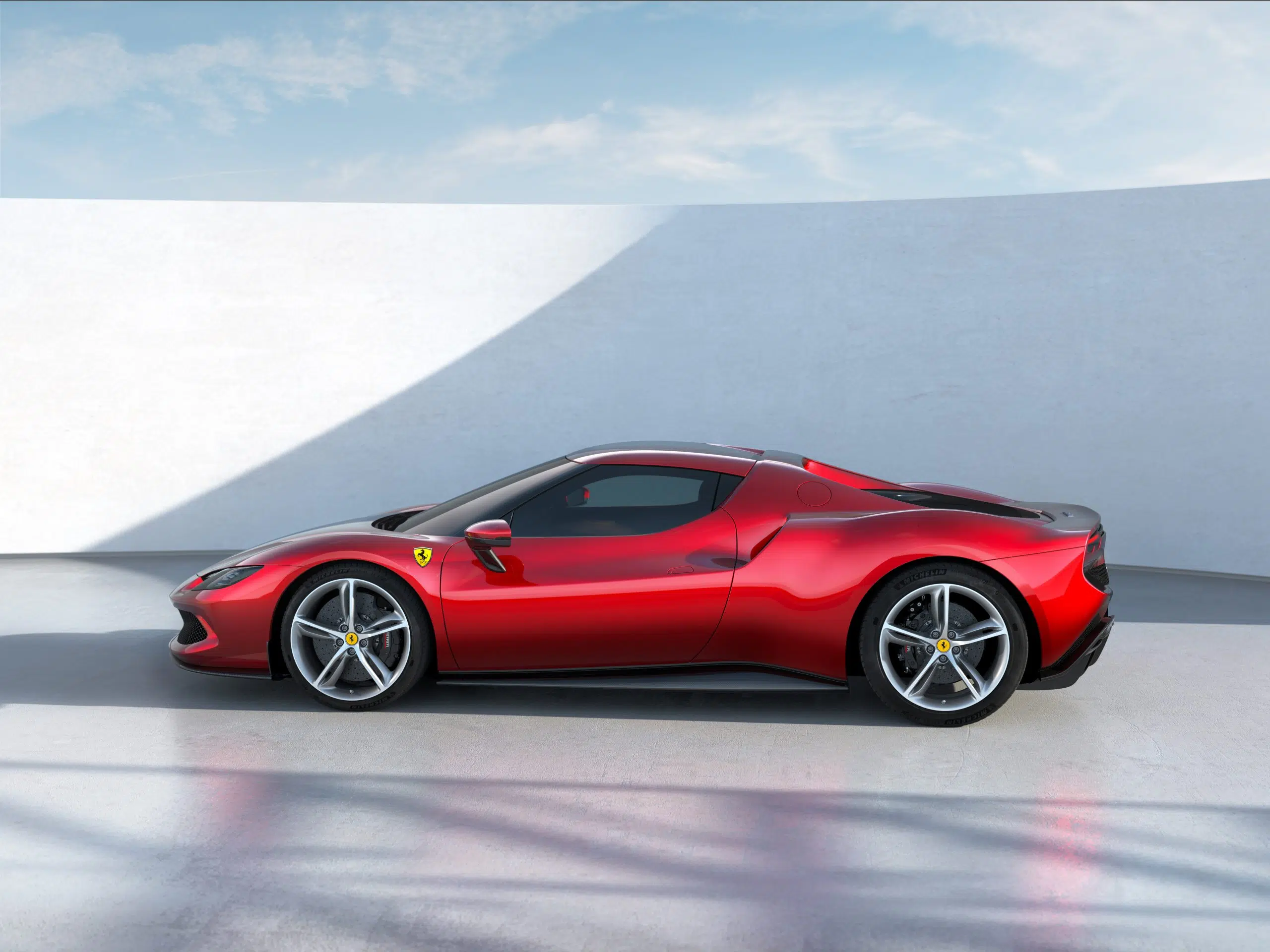
This design, Ferrari says, we will see from now on and its next-generation centre models, as it allows it to create beautiful, aerodynamic and spacious cars.
The driving identity of the 296GTB
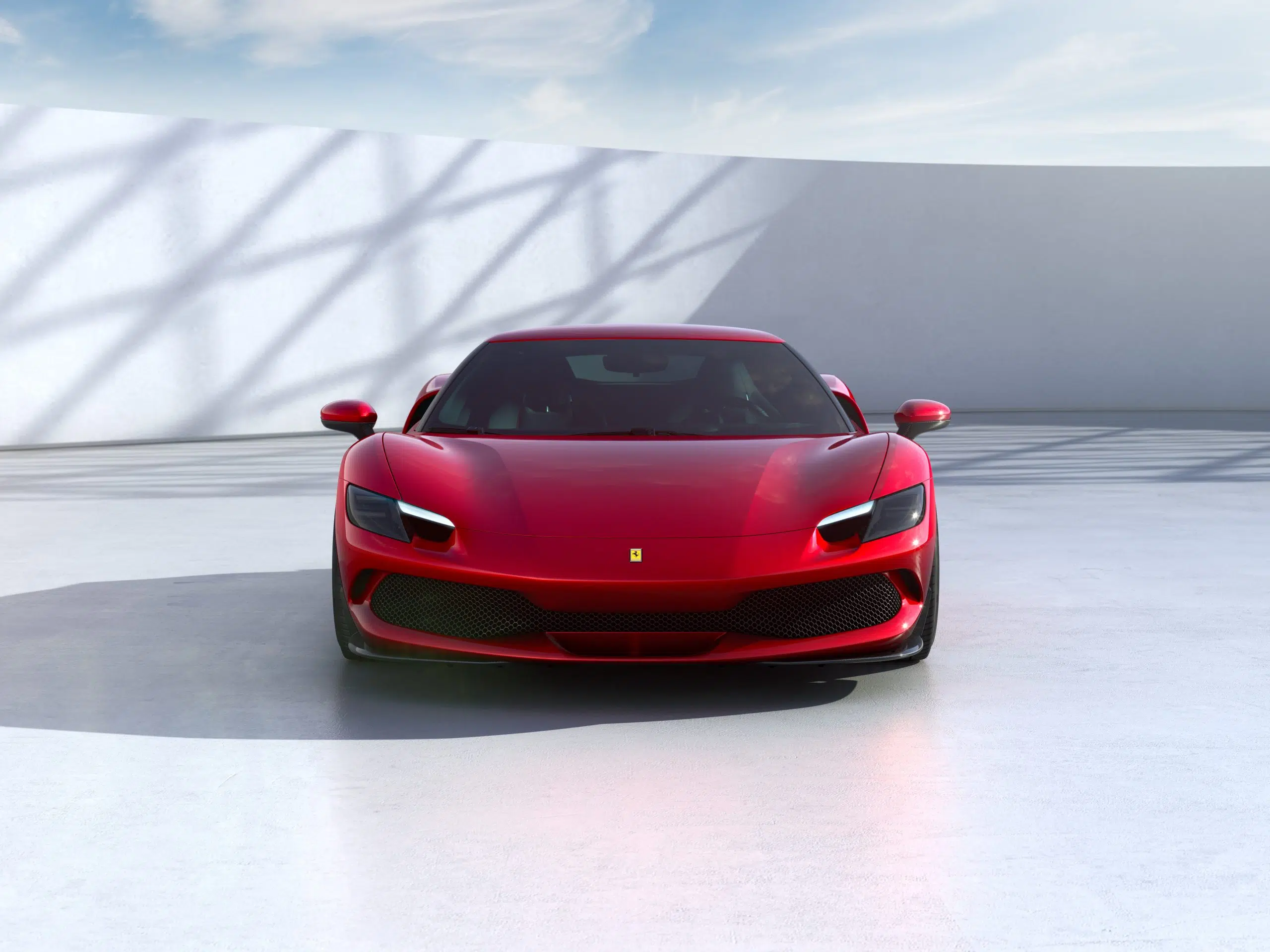
Ferrari focused too heavily on the ID of 296GTB, as to her driving behaviour. The 296GTB is by 30 kg lighter in its mechanical parts compared to the F8 Tributo, it is 5 cm shorter also compared to the F8 Tributo, all in an attempt to create a shorter, lighter and lower centre of gravity platform, which adds up to a adds to both the performance that can be achieved, but also the driving satisfaction that this new platform will offer.
To achieve this, Ferrari tells us that it has focused on 5 key points :
- Horizontally : Here Ferrari refers to the driving behaviour, the response and information that the steering wheel conveys to the driver, but also how the car reacts to the commands given to it
- In any case : Here Ferrari refers to the way in which both the accelerator pedal and the engine itself respond to the driver's wishes
- Changes in relations : The response of the box, but also the way and the feeling of the changes
- Slow down : The feel of the brake pedal, but also the confidence and stability provided by the braking system
- Audio : The various sound profiles carried into the cabin, depending on how "deep" the pedal is, what rpm the engine is at, and more, which collectively create the 296GTB's sound profile
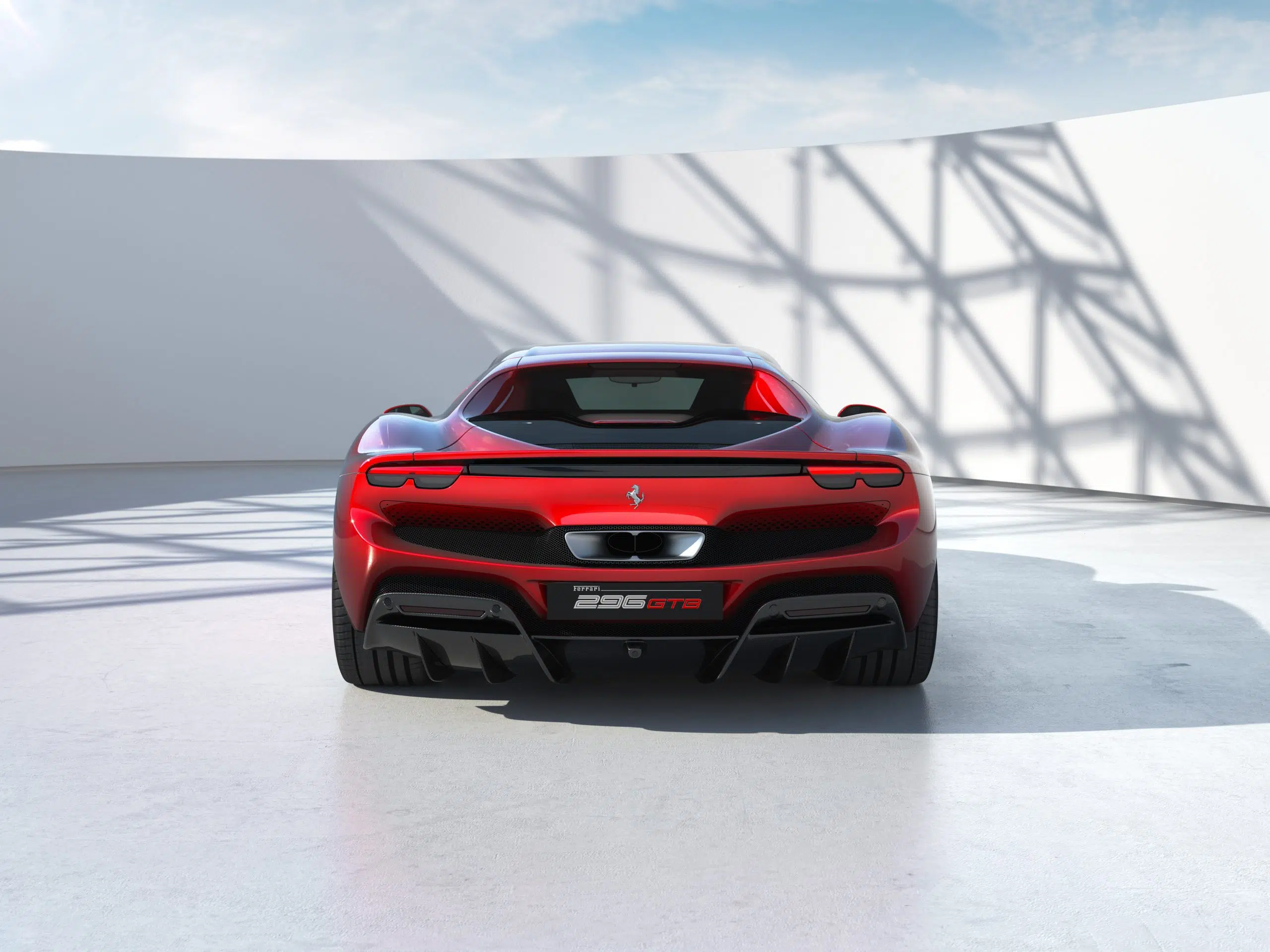
With these 5 key points, Ferrari is focusing on building the 296GTB's identity, but also to give it, as it says, a "Fun to drive" character, as the feelings and sensations a driver gets from driving are just as important as performance and numbers on paper, if not more so.
With a total weight of just under 1470 kg, the 296GTB is the lightest car in its class.
The cockpit of the 296GTB
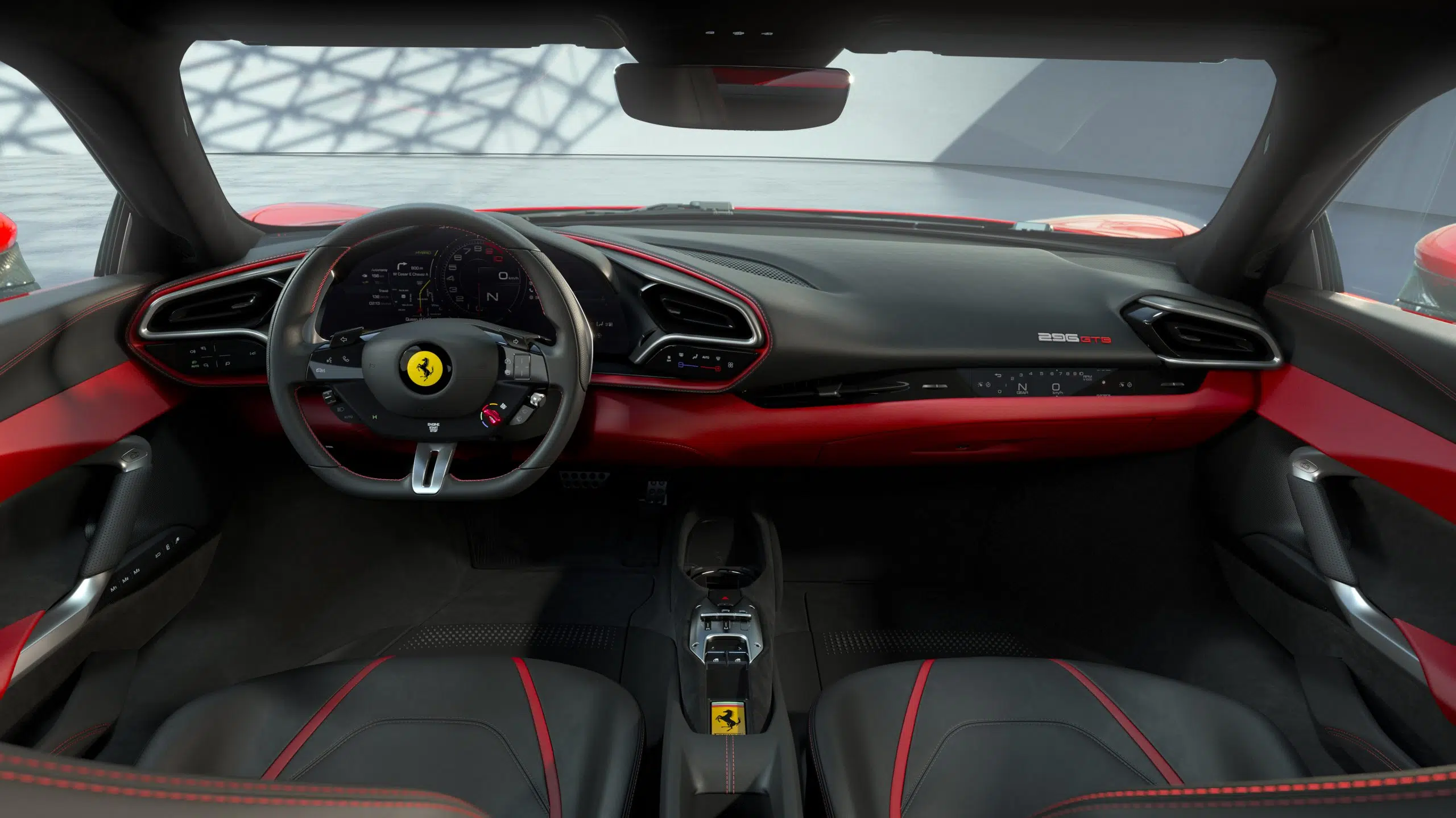
The cabin of the 296GTB, is quite similar to that of the SF90. It's Ferrari's new generation of cabs, with most of the buttons now being touchscreen, the dashboard now a digital display and in the centre, some of the gearbox functions have been made into buttons reminiscent of the beloved scalloped, manual gearboxes of older models.
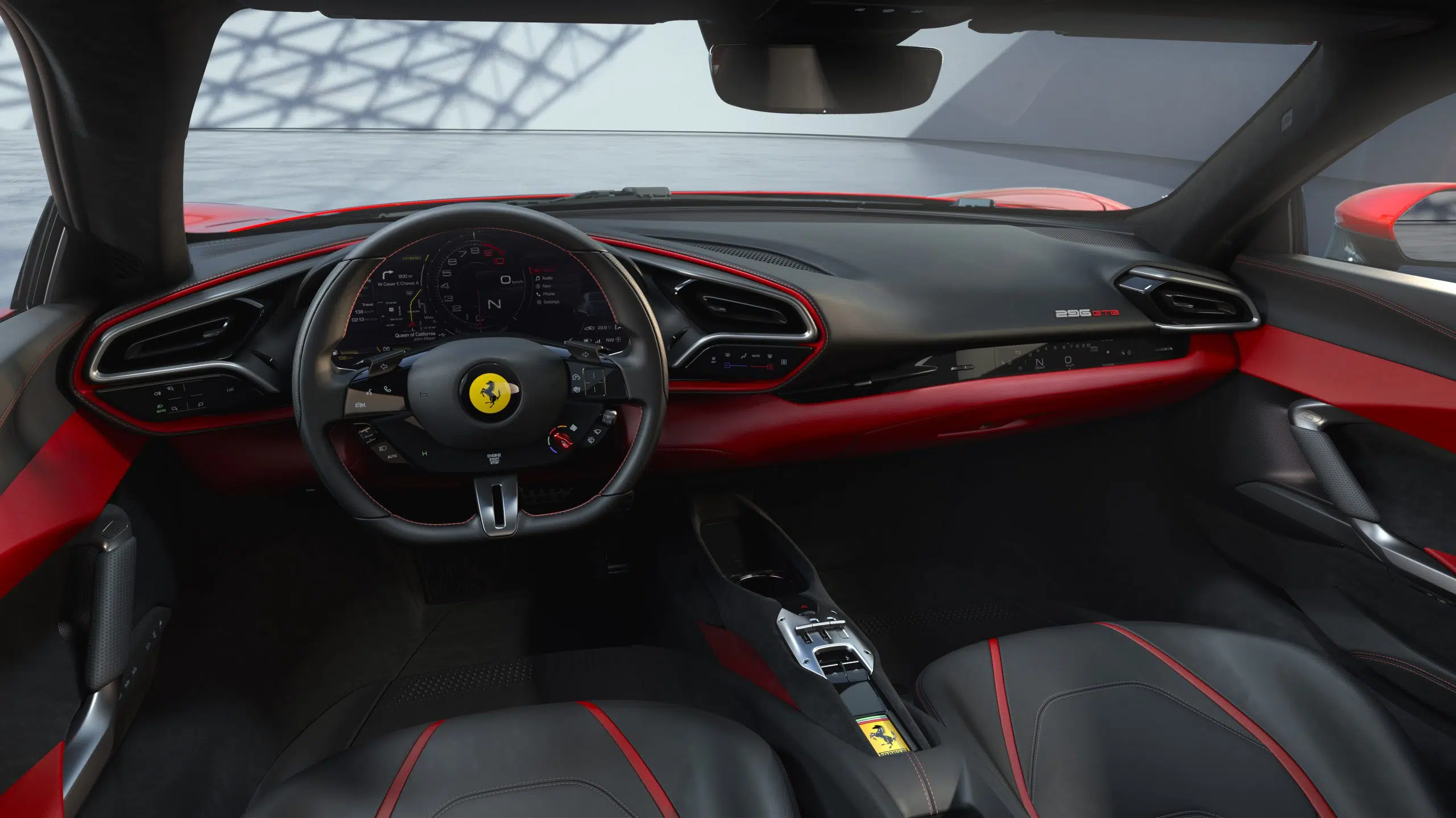
The 296GTB wakes up as soon as the driver touches the button "Engine Start/Stop", with all the other touch buttons being activated and displayed gradually. The 296GTB also brings technological applications previously not found on Ferrari, such as the Heads Up Display, while of course remaining on the list of extras is the passenger information display, first seen on the FF/F12.
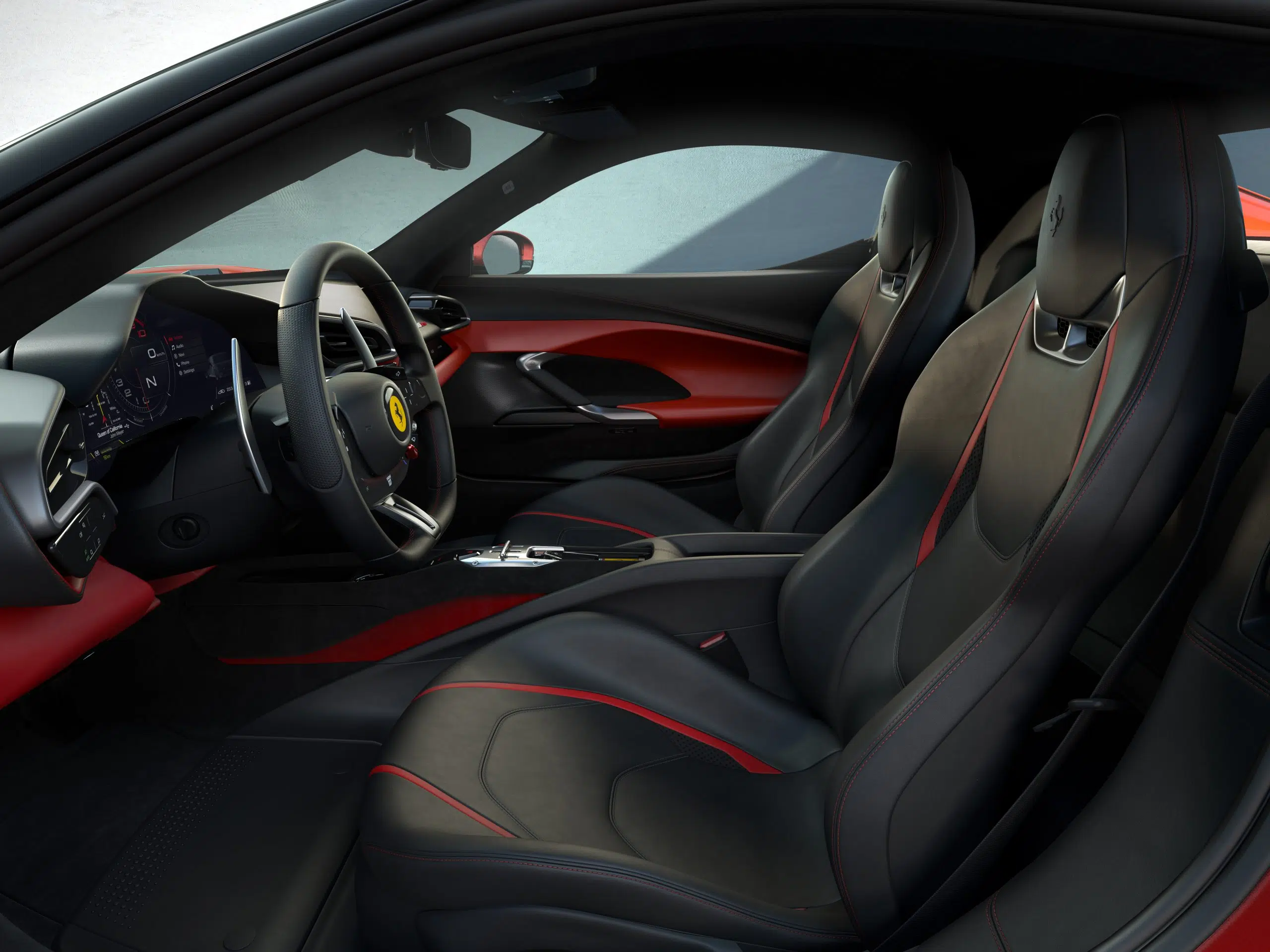
Otherwise, it's an interior that obviously its main element is the skin, the materials will be of similar quality to the company's other models, while the main focus is obviously on the driver.
The "Assetto Fiorano" package
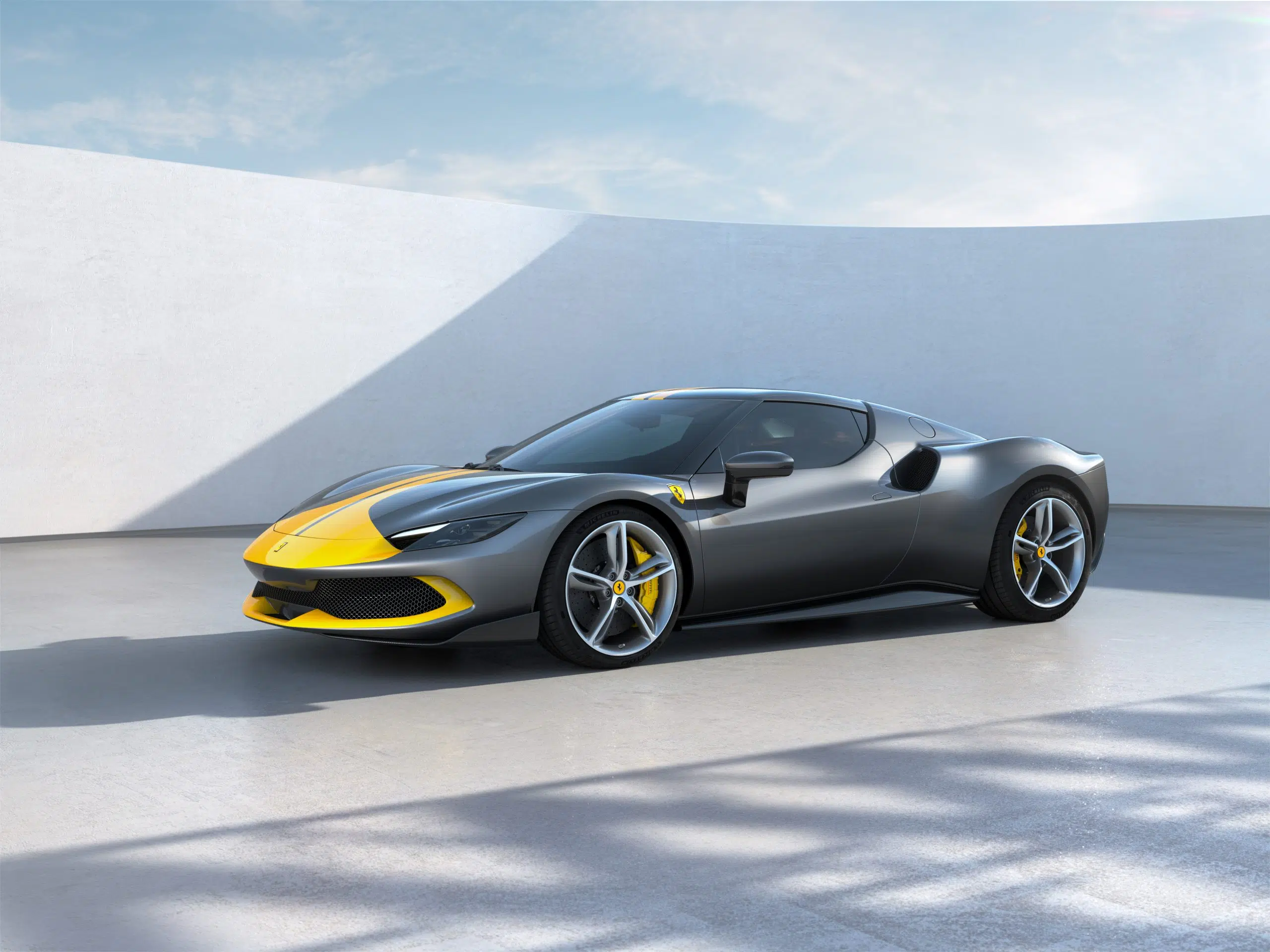
For the track lovers, Ferrari also offers the 296GTB, the Assetto Fiorano package. This package focuses on a number of changes, with the 296GTB's performance on the track in mind. The Assetto Fiorano package equips the 296GTB, with additional carbon aerodynamic parts, thus producing 10 extra kilograms of vertical aerodynamic load, the rear engine glass is made of Lexan to reduce weight, while the suspension system is fitted with shock absorbers Multimatic, derived from the GT3 and GTE versions of the 488 racing cars, focused on track use.
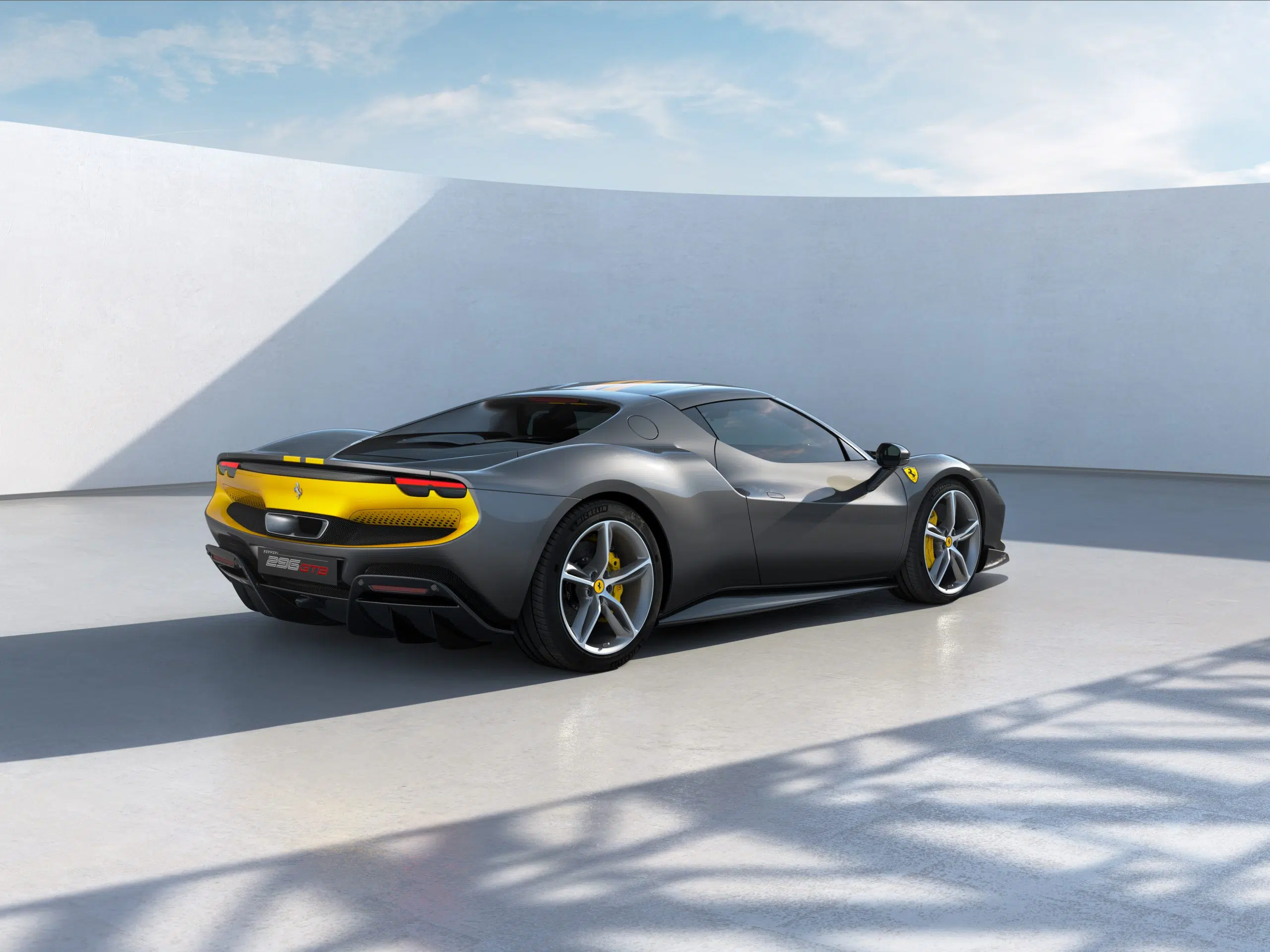
These changes reduce the weight of the 296GTB by 12 extra pounds, while if one prefers the engine glass to be made of Lexan, the reduction is 15 kg.
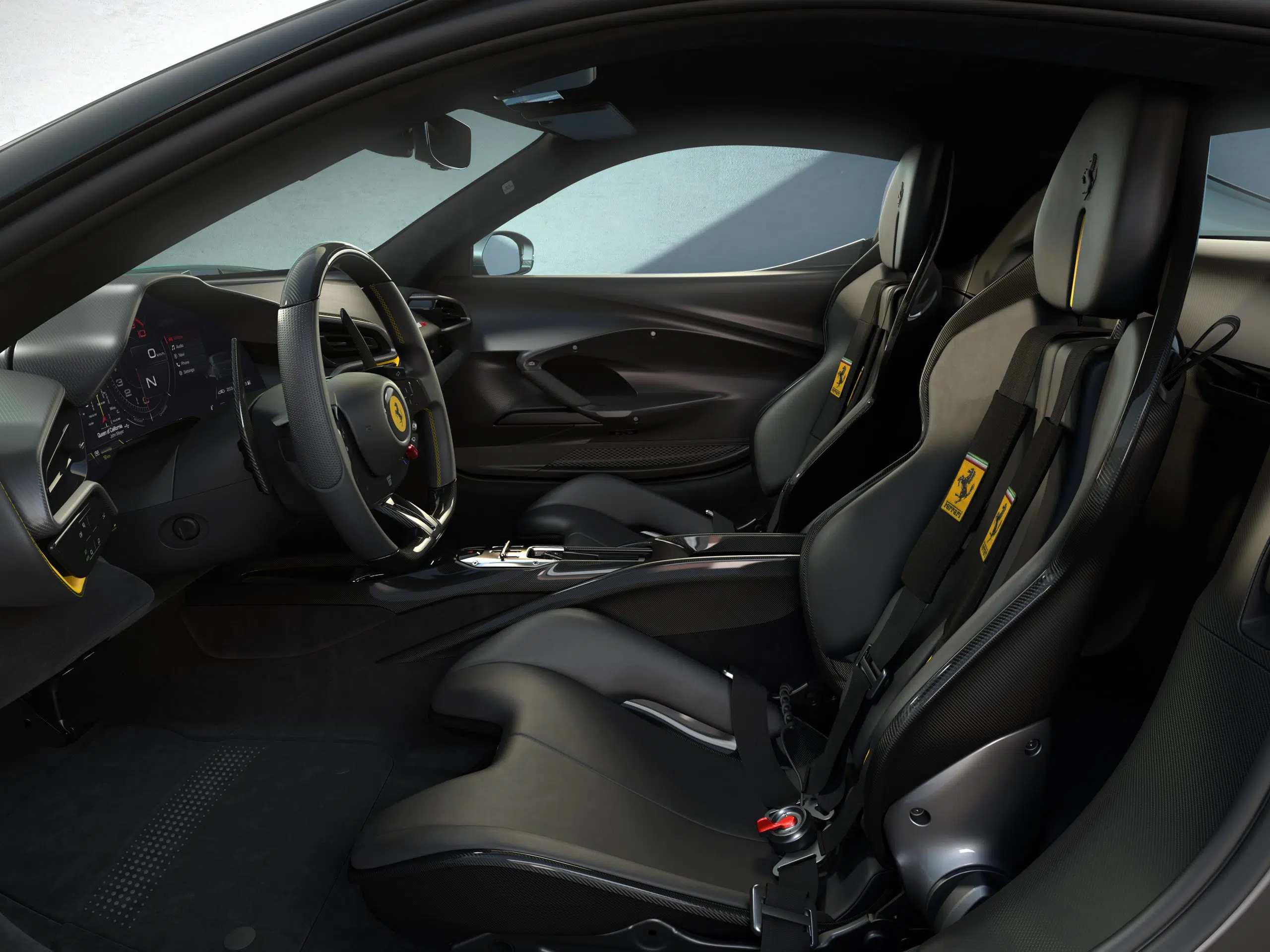
Exclusively for those who opt for the Assetto Fiorano package, it is possible to choose the livery seen in the pictures, inspired by that of the 250GTO.
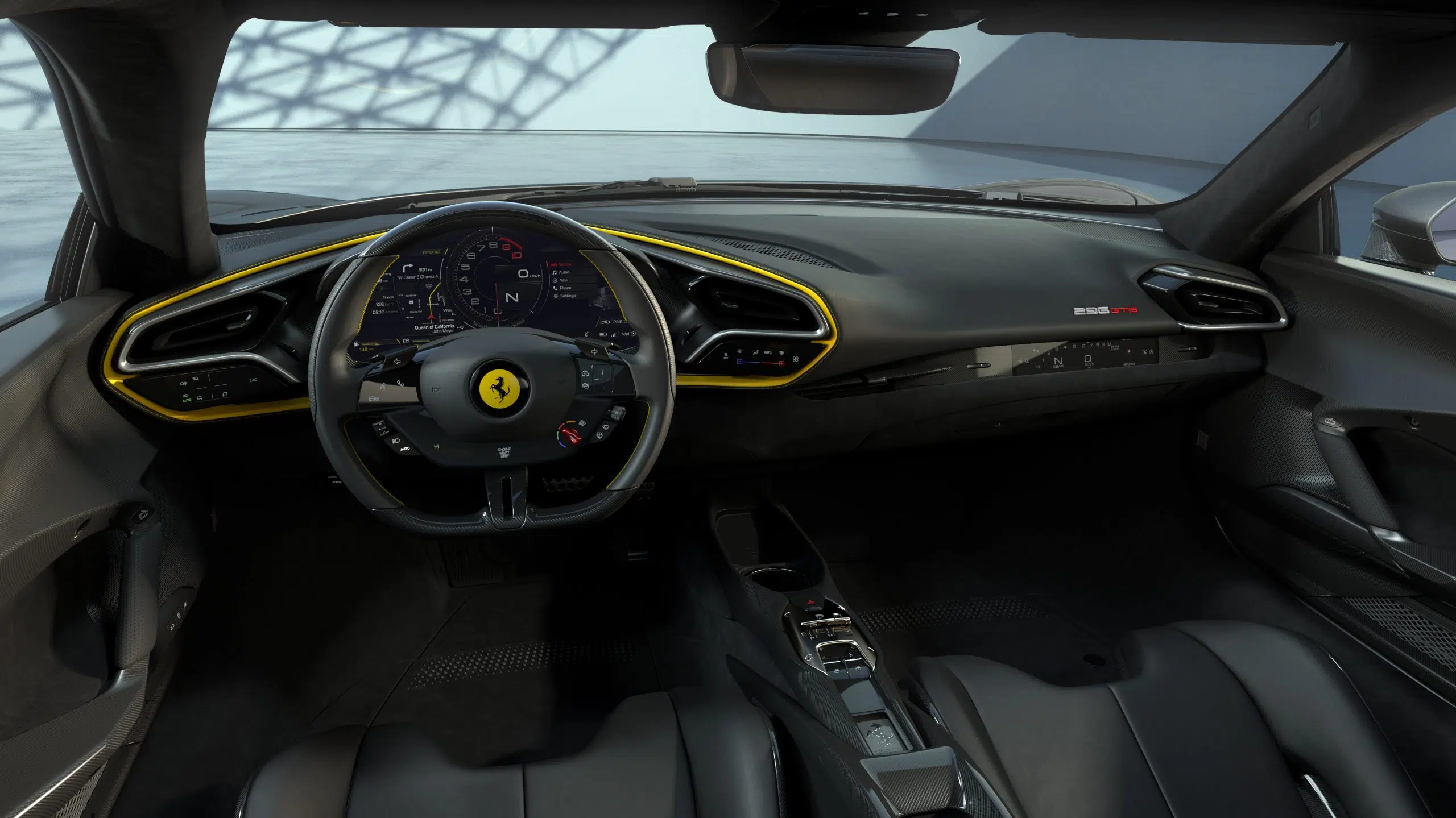
The interior is also focused on track use, with the Comfort seats giving way to bucket seats with 4-point harnesses.
All in all

With the electrification of all cars now the new reality, the automotive industry is at an interesting point. The truth is that the world is not ready for a rapid transition to electrification, as the infrastructure is simply inadequate and inefficient in most of the world, with electrification being affordable and advantageous, for now, to those who drive in the centre of large cities and charge their cars at home, with the lowest nightly charges. The plug-in hybrid cars, they seem to be a ideal middle ground to today, as even if someone can't charge them, they can charge their own battery while the internal combustion engine is running or during energy recovery when braking, and then use it to move.
In the Ferrari world, the atmospheric V8 engine is a thing of the past after the 458's production run with the Speciale Aperta, while the 812 Competizione and 812 Competizione A are quite possibly the last non-hybrid V12 Ferrari. In the new era, however, we see a V6 296GTB and a V8 SF90, coming to open a new chapter in Ferrari history, with explosive performance previously impossible to achieve with a simple internal combustion engine, while also creating an all-electric car for everyday, short-distance driving.
As for the 296GTB, it reminds me a bit of Maserati's MC20, which shows how a supercar can be interesting to drive and sound, despite carrying a turbocharged engine and an OPF filter in the exhaust.
If we look at it numerically, the Price of 296GTB will start from 250.000€ about. With this money one now gets car with 830 hp, which may be as much as everyday is a "simple car", but equally fast and drivable focused, as much as a hypercar 10 years ago.
If we focus on the positive side of progress, maybe things is not so dramatic as much as we like to say it is, isn't it?


